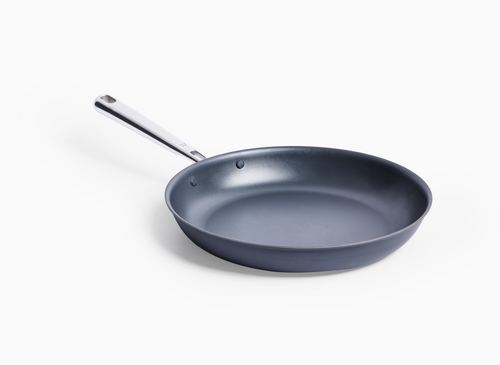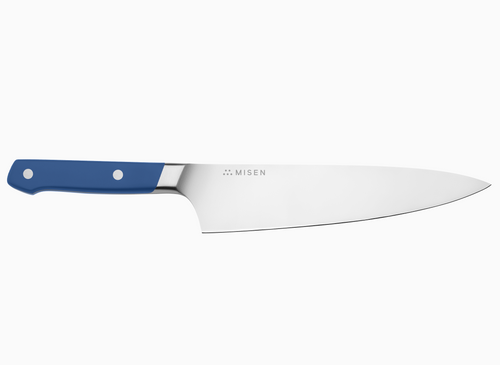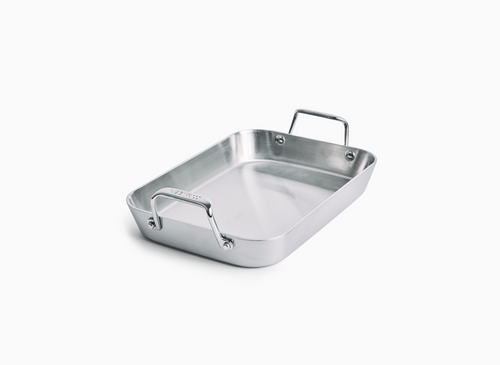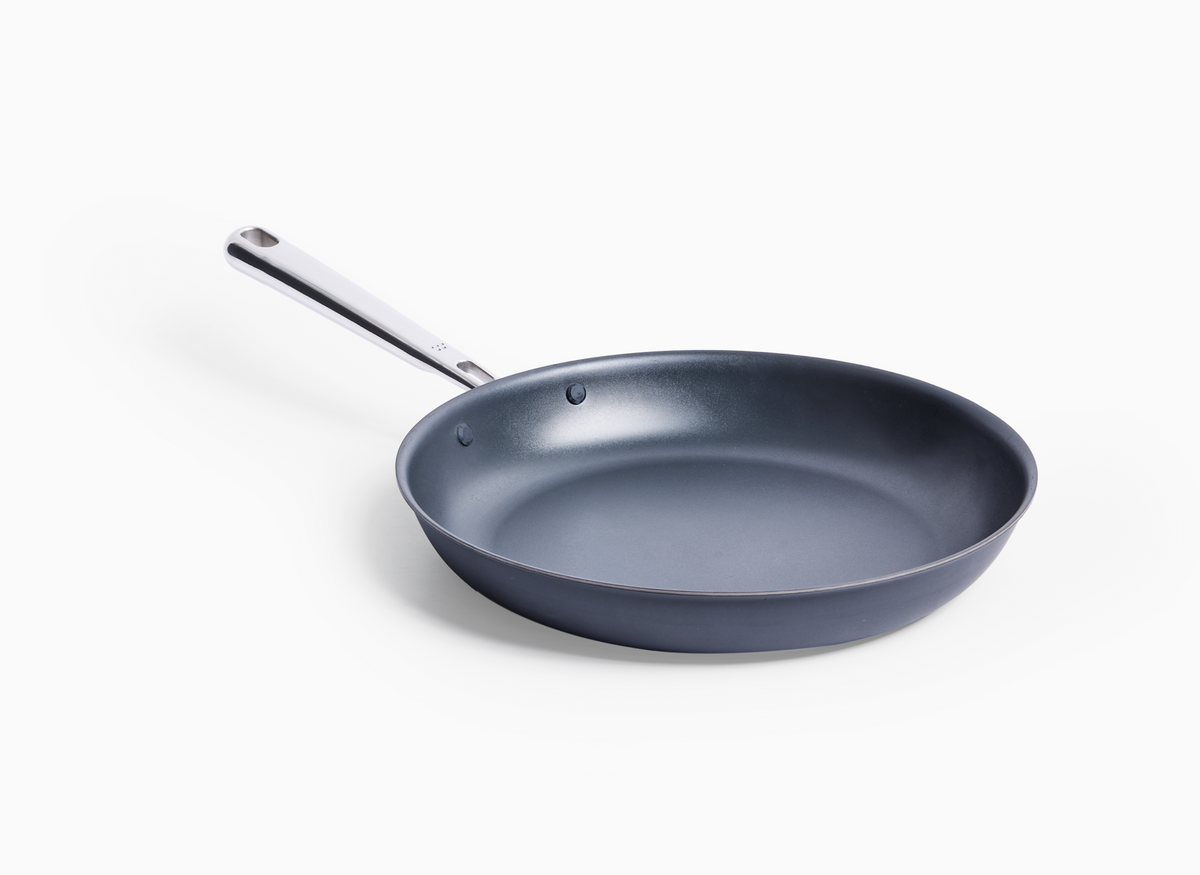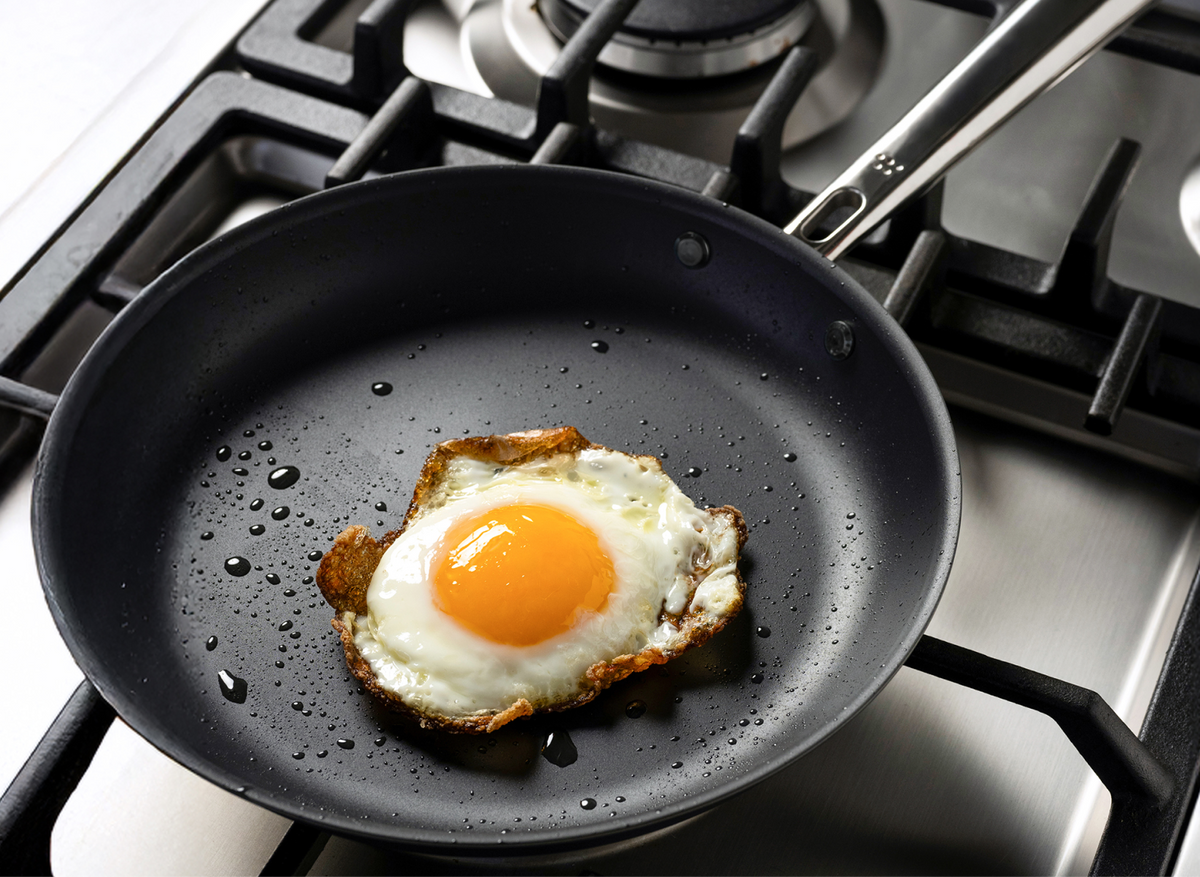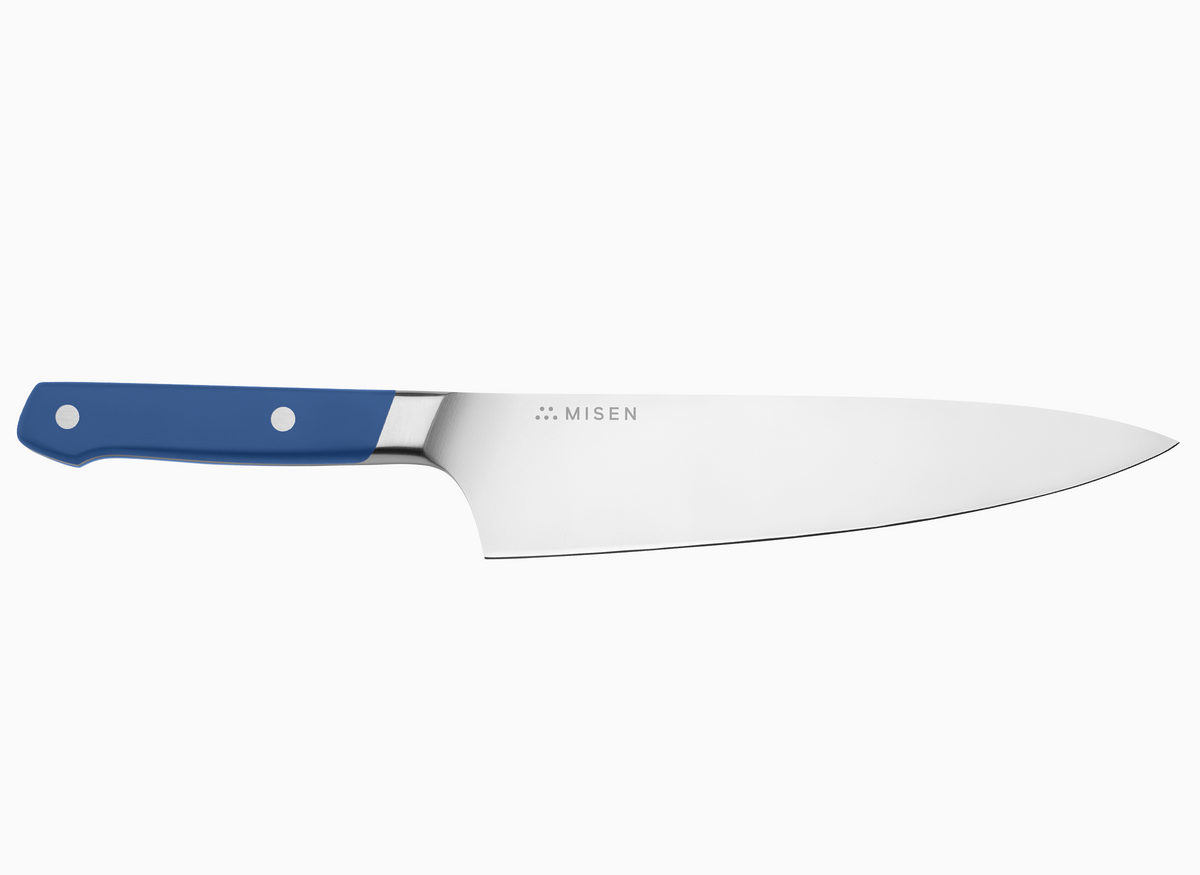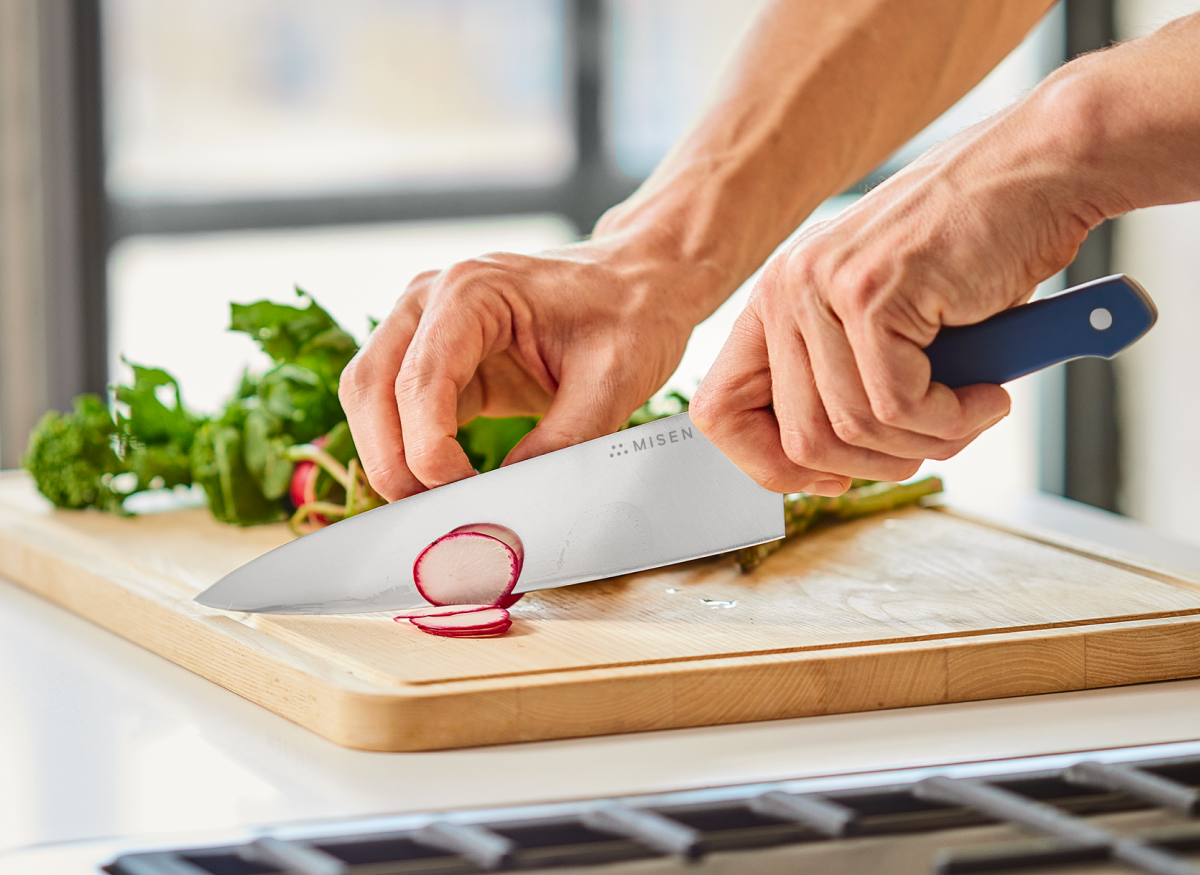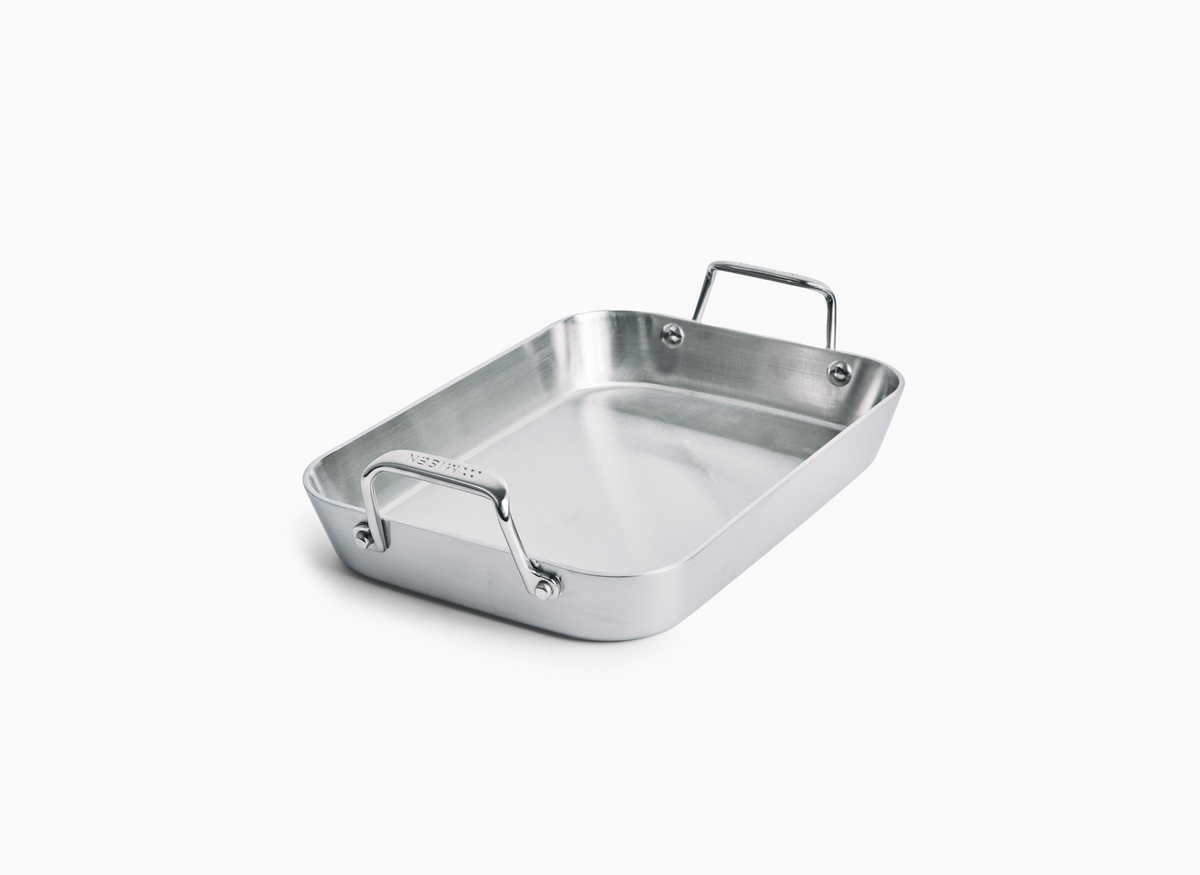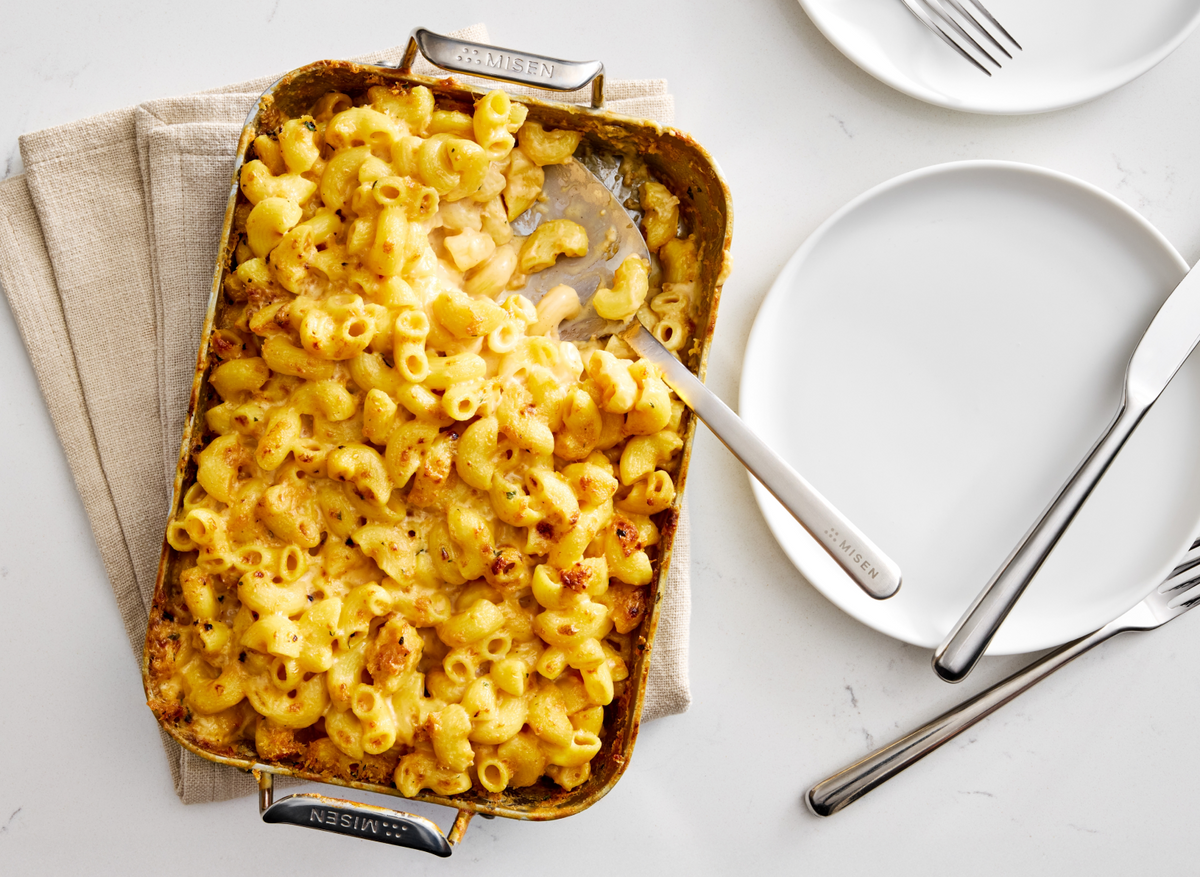How to Chiffonade Basil Like a Pro: A Step-By-Step Guide
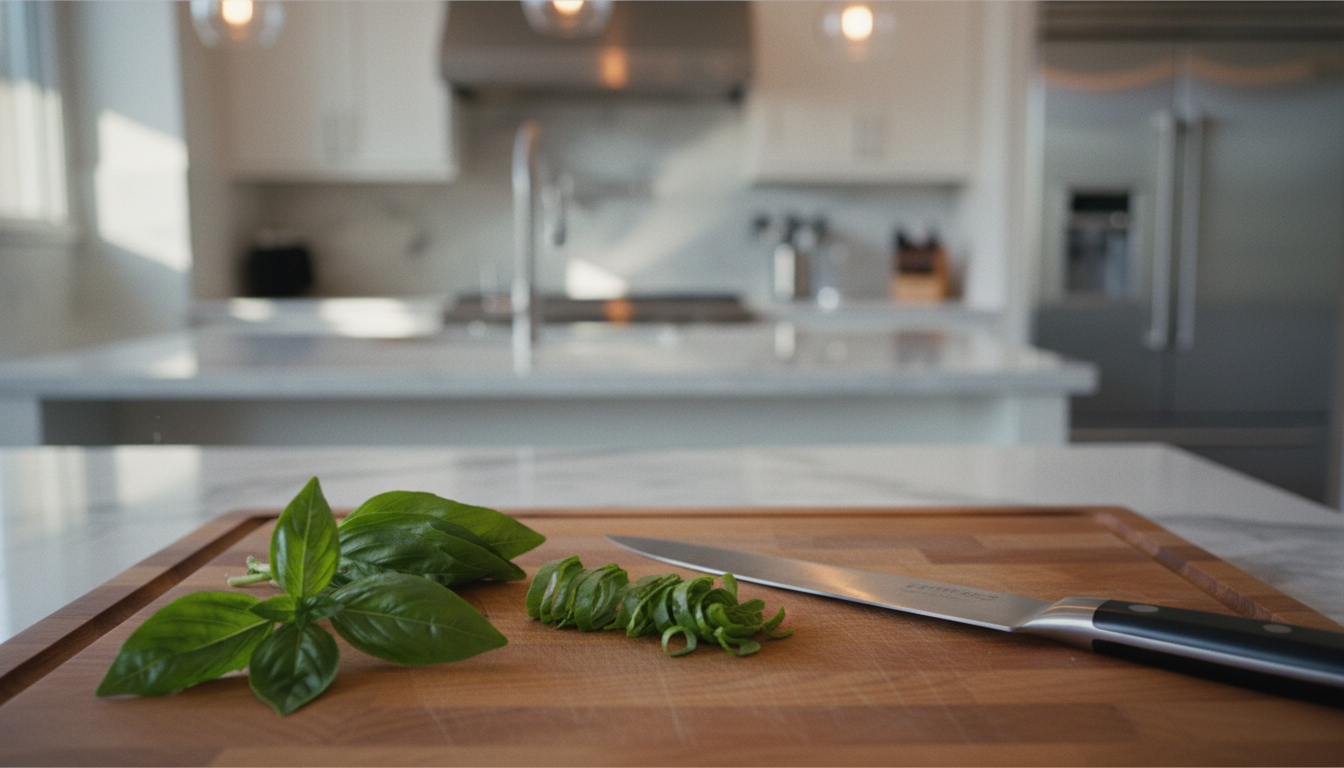
How to Chiffonade Basil Like a Pro: A Step-By-Step Guide
Understanding the Chiffonade Technique
Chiffonade transforms leafy herbs into delicate "little ribbons" that distribute flavor evenly and elevate any dish from ordinary to restaurant-quality.
The French Origins and Definition of Chiffonade
Chiffonade, pronounced as "shif-uh-neyd" or "shif-uh-nahd," translates to "little ribbons" in French. The technique emerged from France's sophisticated culinary tradition, where it gained prominence for transforming leafy ingredients into refined, consistent strips. This cutting method involves stacking, rolling, and slicing pliable ingredients into thin strands, typically measuring between 1/16 to 1/8 inch wide - a precision that ensures even distribution while maximizing flavor release throughout dishes.
Why Chiffonade Is Essential for Basil and Delicate Herbs
Chiffonade transforms delicate herbs into thin, elegant ribbons that elevate both presentation and flavor distribution. For basil specifically, this technique allows the herb to seamlessly incorporate into dishes without overwhelming bites of whole leaves. The resulting fine strips enhance everything from Thai dishes requiring full cups of sliced basil to simple garnishes that make basic meals feel restaurant-quality. Beyond aesthetics, chiffonade serves a practical purpose - the uniform, thin strips ensure herbs blend naturally into salads, soups, pastas and pizzas while releasing their flavors evenly throughout the dish. This precision cutting method is particularly valuable for delicate leafy herbs since it prevents bruising while maximizing the herb's ability to enhance both hot and cold preparations.
How Chiffonade Differs from Other Cutting Methods
Chiffonade differs from other precision cuts by focusing specifically on creating delicate ribbons from leafy ingredients, while techniques like julienne and brunoise produce geometric shapes from firm vegetables. Unlike the precise measurements of julienne (1/16 inch x 1/16 inch x 2 inches) or brunoise (1/16 inch cubes), chiffonade adapts to the natural shape of leaves. The technique stands apart from mincing, which creates tiny irregular pieces through a rocking knife motion, or the lyonnaise cut that produces long strips primarily for onions and potatoes. While other cuts like batonnet and dice require squaring off vegetables first, chiffonade works with the leaf's natural form by stacking and rolling before slicing - making this approach possible with any sharp, well-balanced
When to Use This Technique in Various Dishes
Knowing when to use chiffonade can transform your cooking from good to exceptional. The technique works best when you need herbs distributed evenly throughout a dish - think pasta where every bite should have that fresh basil flavor, or soups where floating whole leaves would be cumbersome. For hot dishes, add your chiffonade at the very last moment to preserve color and prevent wilting. Cold dishes benefit from the ribbons' ability to nestle between ingredients, creating layers of flavor in salads and sandwiches. The key is understanding that chiffonade isn't just about looks - it's about maximizing your herb's impact through strategic cutting and timing (detailed preparation steps are covered in the following sections).
Tools and Preparation for Perfect Chiffonade
A sharp, well-balanced knife is essential for achieving clean chiffonade cuts that preserve the herb's integrity and prevent bruising.
Selecting the Ideal Knife for Precision Cutting
A sharp, well-balanced knife is essential for achieving clean chiffonade cuts. The blade should feel comfortable in your hand without being too heavy, allowing you to maintain precise control during delicate cutting [7]. A quality chef's knife works perfectly for most chiffonade tasks, though some cooks prefer a utility knife with an ultra-sharp blade when working with firmer produce [4]. The knife's natural curvature plays an important role - the belly of the blade enables a smooth rocking motion while keeping the tip anchored on your cutting board [4]. Regular maintenance keeps your knife in optimal condition for consistent results. Simply wash and dry it properly after each use [7]. When selecting your knife, prioritize one that lets you maintain steady control while making those thin, uniform 1/8-inch strips that define proper chiffonade technique [8].
Cutting Board Considerations for Safety and Efficiency
A stable cutting board is essential for safe and efficient knife work. Choose a board with rubber feet or grips to prevent sliding - boards with built-in stabilizers keep them secure even during vigorous chopping [9]. For boards without grips, simply place a damp paper towel underneath to prevent movement [10]. Size impacts both stability and usability. While larger boards offer more cutting space, they can be unwieldy to clean and maneuver. The sweet spot is around 16 by 12 inches, giving you enough room to work comfortably while remaining manageable [9]. Consider your sink size when selecting dimensions - an oversized board that doesn't fit in your sink makes cleaning difficult and potentially dangerous [9]. For maximum efficiency, look for boards with thoughtful features like juice grooves to catch liquids, though these can sometimes reduce your usable cutting surface [9]. The board's weight also affects stability - heavier boards naturally resist sliding but require more effort to move and clean [11].
Choosing the Best Basil Leaves for Chiffonade
Select large, unblemished basil leaves for optimal chiffonade results. Stack leaves from largest to smallest, with bigger leaves forming the base and smaller ones on top [12]. Your leaves should be completely dry before cutting - wet leaves stick together and make clean slicing nearly impossible [13]. Start with around 10 leaves at a time to maintain control, though you'll be able to handle larger stacks with practice [12]. Remove leaves from their stems and prepare only what you'll use immediately. As we'll discuss in the Professional Tips section, cut basil oxidizes quickly and browns [13]. For proper stacking technique that creates tighter rolls, we'll cover the face-down positioning in detail in the next section [1]. This careful leaf selection and preparation creates the foundation for achieving those uniform, delicate ribbons that enhance both presentation and flavor distribution.
Properly Washing and Drying Herbs Before Cutting
Proper washing removes surface contamination from basil leaves, including soil, compost residue, and environmental contaminants. Rinse leaves gently in cold tap water, then follow with a clean water rinse to remove any remaining debris [14]. Yes, washing does reduce some surface oils that contribute to flavor, but using cold water and handling leaves gently helps preserve most of that taste [14]. After washing, skip the towel-drying step. Instead, let your leaves drain naturally in a dish rack while you prepare other ingredients [14]. For the cleanest results without compromising flavor, use the coldest water available and handle leaves as delicately as possible [14]. If you're serious about flavor preservation, growing your own basil in raised beds or containers gives you the most control over cleanliness while maintaining maximum taste [14].
Step-by-Step Basil Chiffonade Method
Stack leaves face-down, roll them into a tight cigar shape, then slice at a 45-degree angle for perfect basil ribbons every time.
Stacking: How to Properly Arrange Basil Leaves
Getting your stack right sets you up for success. Start with 8-10 fresh basil leaves - this gives you enough to work with while maintaining control. Arrange them from largest to smallest, with the bigger leaves on the bottom [15]. Here's a key tip: place leaves face-down. This natural positioning helps them curl upward, making it easier to create a tight roll [12]. Keep your stack neat and aligned, with leaves directly on top of each other. Any gaps or overlapping edges will throw off your cuts. Make sure those leaves are completely dry - wet leaves stick together and won't slice cleanly [15].
Rolling: Creating the Perfect Cigar-Shaped Bundle
Now for the rolling - think of it like rolling a tiny cigar. Start from the stem end and roll toward the tip with firm but gentle pressure. You want the bundle tight enough to hold its shape, but not so tight you crush those delicate leaves [16]. Keep your pressure consistent throughout the roll to create an even cylinder. This tight formation is what gives you those perfect, uniform ribbons in the next step.
Slicing: The Correct Angle and Pressure for Thin Ribbons
Here's where a sharp knife makes all the difference. Position your knife at a 45-degree angle and let the blade do the work - no need to press down hard. A quality chef's knife gives you the control needed for thin, consistent strips. Use a smooth, continuous motion rather than sawing back and forth [17]. For the finest ribbons, aim for slices about 1/8-inch wide - this creates the delicate appearance that defines proper chiffonade [18]. Try using a gentle rocking motion, keeping the knife tip in contact with the board [19]. This technique preserves the basil's integrity while delivering those picture-perfect green ribbons.
Visual Guide to Common Mistakes and How to Avoid Them
Let's troubleshoot the most common chiffonade mistakes. First up: stacking leaves face-up instead of face-down. This works against the leaf's natural curl and makes rolling difficult [20]. Another common error is rushing the roll or using inconsistent pressure, which creates loose bundles that slice unevenly [1]. Using a dull knife or pressing too hard? That's a recipe for bruised, torn leaves instead of clean ribbons. The fix is simple: stack face-down, roll with steady pressure, and let your sharp knife do the work - especially the section near the handle where it's sharpest [1]. Remember what we covered about timing earlier - prep your basil just before serving to avoid browning [6]. Start with dry leaves and stick to 8-10 per stack while you're learning [20].
Professional Tips for Chiffonade Excellence
Cut basil oxidizes within minutes, so chiffonade immediately before serving and use minimal knife pressure to prevent bruising.
Knife Handling Secrets from Professional Chefs
A sharp, well-maintained knife makes all the difference for clean chiffonade cuts. Let your knife's weight do the work - pressing down forcefully only bruises the leaves. Keep your fingertips curled under when holding the rolled bundle, using your knuckles as a guide while maintaining steady control of the handle. The key is smooth, continuous slices in one direction. Avoid sawing motions that tear rather than cut. Practice builds muscle memory for consistent results - even professional chefs had to master this technique through repetition. For best results, ensure your knife stays sharp with regular maintenance or professional knife sharpening.
Preventing Basil from Bruising or Discoloring
Basil browns quickly once cut - it's oxidizing just like a sliced apple. While you can't stop this completely, you can slow it down. Your cutting technique matters: use minimal pressure to avoid bruising the leaves, which accelerates oxidation. For short-term storage, place cut ribbons in a dry bowl covered with a damp paper towel. Another trick? Lightly oil the leaves before rolling - the oil coats your knife blade and seals the cut edges, creating a protective barrier. Remember that heat causes instant blackening, so always add basil at the very end of cooking. For best results, chiffonade right before serving (see timing tips below for more details).
Adjusting Your Technique for Different Basil Varieties
Different basil varieties need different approaches. Thai basil's sturdier leaves handle slightly wider cuts (around 1/8 inch), which helps preserve their intense flavor in fried rice and curries. Sweet basil's more delicate leaves need thinner cuts (closer to 1/16 inch) to prevent bruising. Adjust your stack size too - while 8-10 leaves works for standard sweet basil, drop to 6-8 for heartier varieties to maintain control. With smaller-leafed types, use gentler pressure when rolling to protect their delicate structure. Tender varieties brown fastest, so cut these at the last possible moment.
Timing Considerations: When to Chiffonade in Your Cooking Process
Timing makes or breaks your basil chiffonade. Cut basil oxidizes quickly - within minutes, those vibrant green ribbons start turning black. The solution? Chiffonade immediately before serving whenever possible. If you must prep ahead, the damp paper towel method mentioned above buys you some time. For hot dishes, add basil ribbons at the very last second - heat accelerates browning dramatically. When recipes call for large amounts (like the full cup needed for pad krapow gai), cut in smaller batches as you cook rather than all at once. This keeps each addition fresh and vibrant.
Culinary Applications for Basil Chiffonade
Chiffonade basil melts perfectly into hot pasta and soups while maintaining its bright flavor when added at the last moment.
Classic Dishes Enhanced by Basil Chiffonade
Traditional Italian dishes practically demand the elegant touch of basil chiffonade. Those thin ribbons melt into hot pasta dishes and soups without overwhelming any single bite - think chicken parmesan, gnocchi skillets, or a simple marinara [15]. The classic Margherita pizza and caprese salad showcase how chiffonade distributes basil's flavor more evenly than torn leaves ever could [24].
But don't stop at Italian cooking. Thai cuisine relies heavily on basil chiffonade - dishes like pad krapow gai often call for a full cup of thinly sliced basil [2]. The technique works equally well in Vietnamese pho, where you'll add fresh ribbons directly to the hot broth. Even everyday dishes benefit from this professional touch: transform basic avocado toast, elevate a butternut squash soup, or finish off a spring vegetable pasta with delicate green ribbons [6].
Creative Garnishing Techniques with Herbal Ribbons
Want to make your dishes look restaurant-worthy? It's all about the presentation. Cut your basil ribbons as thin as possible - aim for 1/8 inch or less using your sharpest knife (a well-maintained chef's knife makes all the difference here) [1]. The key is creating that fluffy, airy pile of ribbons rather than flat, clumped herbs.
For hot dishes, timing is everything. Hold off on adding those beautiful ribbons until the very last second - literally as you're carrying the plate to the table. For cold dishes and appetizers, gently tease apart the ribbons with your fingertips after cutting to create volume and prevent clumping [12]. Stack those ribbons high on bruschetta, nestle them into the center of a soup bowl, or scatter them artfully across a pizza. The visual impact transforms even simple weeknight dinners into something special.
Incorporating Chiffonade into Hot vs. Cold Dishes
Hot dishes need special handling to preserve basil's bright color and fresh flavor. Add your chiffonade only after removing the dish from heat - those delicate ribbons will wilt and blacken instantly if they hit direct heat [1]. Stir them into pasta right before plating, float them on soup as you serve, or let diners add their own fresh ribbons to steaming Thai curries tableside.
Cold preparations give you more flexibility. Toss basil ribbons directly into grain salads, layer them in sandwiches, or fold them into cold pasta salads. Just remember to fluff and separate the ribbons after cutting - they tend to stick together in clumps, especially in dishes with dressing [1]. For recipes requiring lots of basil (like that full cup needed for authentic pad krapow gai), cut in small batches throughout your prep rather than all at once [2].
Complementary Flavors and Ingredients That Pair with Basil
Basil plays well with nearly everything in your kitchen. The classic pairings never get old - tomatoes and mozzarella in caprese, garlic and olive oil in pasta, or the holy trinity of basil, oregano, and parmesan on pizza [15]. But venture beyond Italian borders and you'll discover basil's incredible range.
Thai basil stands up to bold flavors like fish sauce, chili, and lime in Southeast Asian cooking. Regular sweet basil brings unexpected brightness to fruit salads, especially with strawberries or peaches. Try folding ribbons into compound butter for steaks, mixing them into vinaigrettes, or stirring them into creamy risottos right before serving. The thin chiffonade strips ensure every bite gets its fair share of flavor - no more fishing around for that one perfect basil leaf [25].
Beyond Basil: Expanding Your Chiffonade Repertoire
The chiffonade technique works beautifully on mint, sage, and even hearty greens like kale, creating tender ribbons that cook evenly and distribute perfectly.
Other Herbs That Benefit from the Chiffonade Technique
Once you've mastered basil chiffonade, you'll find this technique transforms other soft, broad-leafed herbs beautifully. Mint and sage make excellent candidates - their wide leaves create those same elegant ribbons you've perfected with basil. Skip woody herbs like rosemary and thyme though, as they're too rigid for rolling. While parsley's irregular shape isn't ideal, any leafy herb with enough surface area can work.
The real magic happens when you cut herbs this way - you're releasing more aromatic oils than you would with whole leaves or rough chops. This means better flavor throughout your entire dish. The technique stays the same as we covered earlier: stack, roll, and slice with your sharp knife using that gentle rocking motion. Just remember that all herbs oxidize quickly once cut, so save this step for right before serving.
Applying Chiffonade to Leafy Greens and Vegetables
Now let's take your chiffonade skills beyond herbs. This technique works wonders on leafy greens, transforming tough kale into tender ribbons and making salads more enjoyable to eat. The thin strips you create actually help break down tough fibers - that's why chiffonaded kale feels so much softer than torn pieces.
You'll love how these delicate ribbons cook more evenly and quickly than larger pieces. Try adding them to soups, stews, or grain bowls where they'll distribute perfectly throughout the dish. Even simple salads become more refined when you transform whole leaves into elegant strips. The technique works best with broader leaves that you can stack and roll effectively - save smaller or thicker ingredients for other cutting methods.
Modifying Your Technique for Different Leaf Structures
Different leaves need different approaches, but don't worry - the adjustments are simple. For herbs with thick stems running through the center (think mint or sage), try this trick: stack your leaves, fold them in half, then cut from both sides to avoid those tough, stringy bits.
Working with delicate herbs? Make quick, confident cuts and handle them gently to prevent bruising. Heartier greens like collards can handle slightly wider cuts - aim for about 1/4 inch instead of the usual 1/8 inch to help them keep their structure.
Your roll tightness matters too. Keep it loose for tender butter lettuce, but roll romaine more tightly for cleaner cuts. As we discussed in the step-by-step section, always stack larger leaves on the bottom with the glossy side down - this natural curl helps create that perfect cigar shape for slicing.
Innovative Recipe Ideas Using Various Chiffonade Ingredients
Ready to get creative? Your chiffonade skills open up endless possibilities. Thai dishes shine with generous amounts of basil ribbons - some recipes use a full cup of these delicate strips. But you don't need complex recipes to impress. Even scrambled eggs become special when topped with fresh herb ribbons.
For salads, try this pro tip: romaine chiffonade pairs beautifully with creamy dressings that coat each ribbon perfectly. Making a grain bowl? Those thin strips nestle right between quinoa or farro, giving you greens in every bite. Want restaurant-style presentation? Arrange your chiffonade in fluffy, airy piles instead of flat layers - it adds height and makes any dish look professionally plated.
Mix sturdy greens like kale chiffonade with shredded Brussels sprouts for make-ahead salads that won't wilt. With your sharp knife and newfound technique, you'll transform everyday ingredients into professional-looking culinary creations.
- Chiffonade creates uniform 1/16 to 1/8 inch ribbons that distribute herbs evenly and enhance both flavor and presentation
- Use a sharp, well-balanced knife and stable cutting board with proper hand positioning for clean, precise cuts
- Stack 8-10 dry leaves face-down, roll tightly into a cigar shape, then slice at a 45-degree angle
- Cut basil immediately before serving to prevent oxidation and browning - timing is crucial for maintaining vibrant color
- Add chiffonade to hot dishes at the last moment, but incorporate directly into cold preparations
- The technique works beyond basil on mint, sage, and leafy greens - adjust pressure and width based on leaf structure
- Common mistakes include using wet leaves, stacking face-up, and pressing too hard with the knife
- https://www.bowlofdelicious.com/chiffonade/
- https://thepracticalkitchen.com/how-to-chiffonade-basil-and-other-leafy-greens/
- https://www.masterclass.com/articles/how-to-chiffonade
- https://www.escoffier.edu/blog/culinary-arts/8-knife-cuts-every-professional-cook-should-know/
- https://www.thepioneerwoman.com/food-cooking/cooking-tips-tutorials/a94168/knife-cuts-101/
- https://urbanfarmie.com/basil-chiffonade/
- https://misen.com/blogs/news/chiffonade-cut-definition-master-the-art-of-fine-slicing?srsltid=AfmBOooN7CU6IBuoVc5CBI839Gcp9Ama-WjiPrg0XCO0b-NQ6o-j7Krq
- https://whatsfordinner.com/kitchen-tips/culinary-cutting-terms-images/
- https://www.nytimes.com/wirecutter/reviews/best-cutting-board/
- https://www.foodnetwork.com/how-to/packages/shopping/product-reviews/best-cutting-boards
- https://www.seriouseats.com/best-cutting-boards-7496186
- https://food52.com/story/10964-how-to-chiffonade-basil-or-any-leafy-herb
- https://misen.com/blogs/news/chiffonade-herbs-technique-mastering-consistent-even-slices?srsltid=AfmBOoqnFSvzpWbsO5a2H2pWcaSk8Vxx33Z0um09TfCJVvbytts16RDn
- https://cooking.stackexchange.com/questions/23794/basil-to-wash-or-not-to-wash-best-practices
- https://www.mysequinedlife.com/how-to-chiffonade-basil/
- https://totaste.com/how_tos/chiffonade/
- https://misen.com/blogs/news/chiffonade-cut-definition-master-the-art-of-fine-slicing?srsltid=AfmBOopfEk00k3myFeFdUpOrdNyns1AaVac0m0SqPH6iGvWplR52BEYu
- https://itsavegworldafterall.com/basil-chiffonade/
- https://www.evolvingtable.com/chiffonade/
- https://themom100.com/how-to-chiffonade-basil/
- https://www.ice.edu/blog/how-chiffonade-chop-and-slice-different-herbs
- https://www.willcookforfriends.com/2013/08/how-to-chiffonade-basic-knife-skills-part-1-fak-friday.html
- https://fivelittlechefs.com/recipe/ms-cooking-school/chiffonade-basil.html
- https://feelgoodfoodie.net/recipe/how-to-cut-basil/
- https://misen.com/blogs/news/chiffonade-cut-definition-master-the-art-of-fine-slicing?srsltid=AfmBOoqKbjybSA50vPl_5g3u54Tt24Q4PnlmkBaB4Cn2Qo5NhOjZiFxb
- https://www.tastingtable.com/1109570/the-ideal-type-of-herbs-to-chiffonade/
- https://www.forksoverknives.com/how-tos/how-to-chiffonade/
- https://www.seriouseats.com/knife-kills-how-to-chiffonade-mint-and-other-leafy-herbs
- https://misen.com/blogs/news/chiffonade-cut-definition-master-the-art-of-fine-slicing?srsltid=AfmBOood2D7cRyp0dc_dDiXrDfznE9j5DivbS5XUVgLmLq_nincTREFW
- https://misen.com/blogs/news/how-to-chiffonade-lettuce-perfectly-for-crisp-even-shreds?srsltid=AfmBOoqfJmylCZ_DB6bDIUjY0kLJ0TUMxJeAI583cruNXaS-Xp8XJHvo
